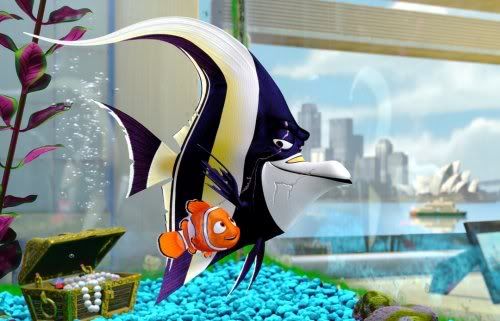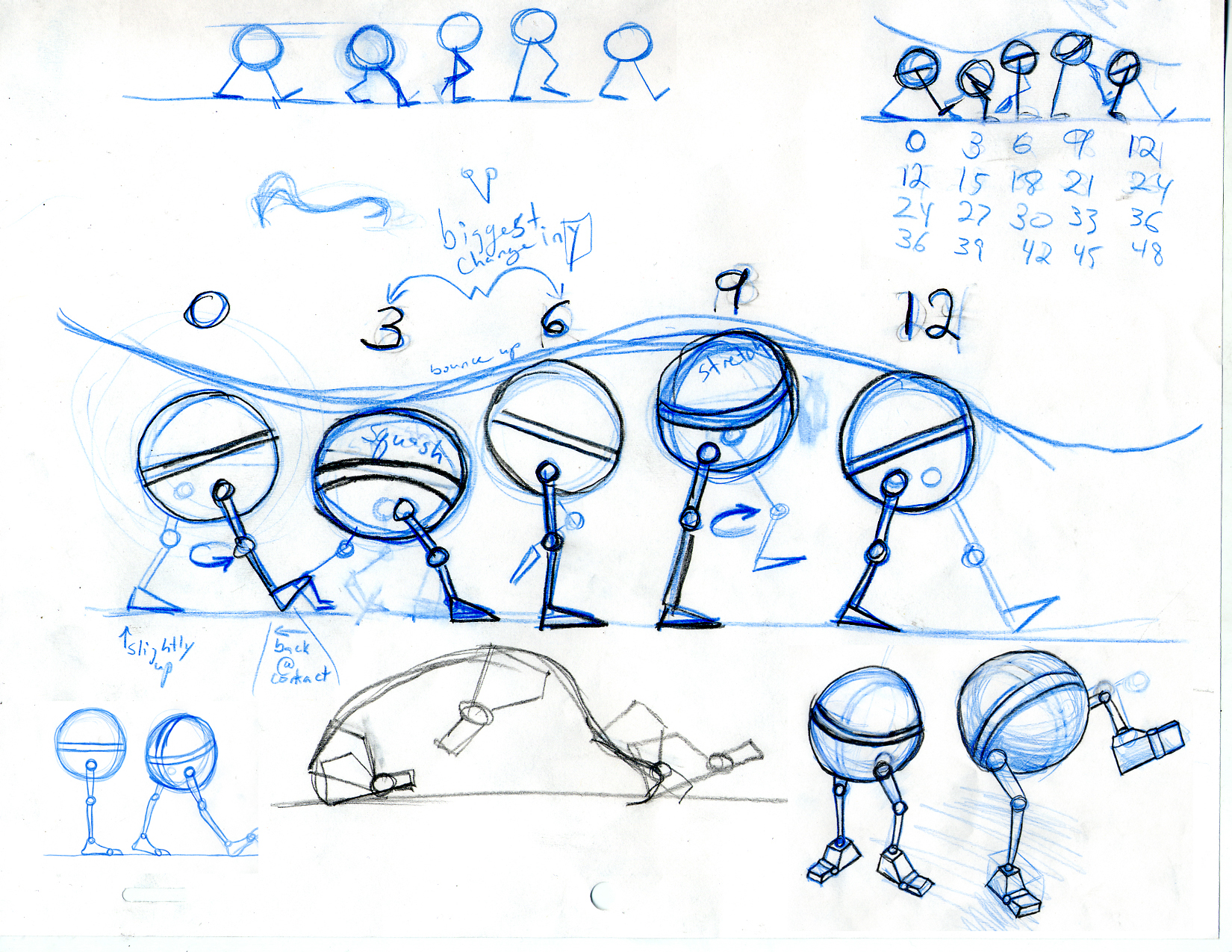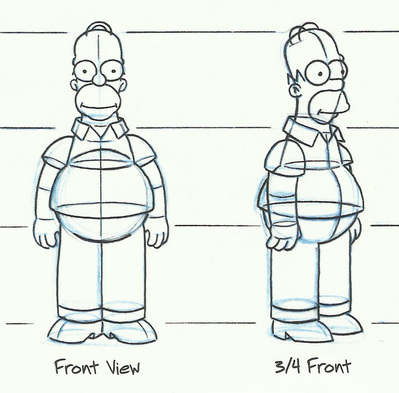Like everything in the world animation as well has got its own principles. Keeping those rules might not be easy nevertheless skilled animators must follow them in order to keep their animations looking convincing and neat looking.
1.
Squash and Stretch
gives the weight and volume to the object when it interacts with environment. The perfect example for that rule is bouncing ball.
gives the weight and volume to the object when it interacts with environment. The perfect example for that rule is bouncing ball.
Squashed: An object to become
Shorter must also become Fatter.
Stretched: An object to become
Taller must become Thinner.
2.
Anticipation
You can notice this rule right before the character in the animation is moving. It means that character prepares himself for the action. For example if the character is playing golf he must prepare himself properly before hitting the ball.
You can notice this rule right before the character in the animation is moving. It means that character prepares himself for the action. For example if the character is playing golf he must prepare himself properly before hitting the ball.
3. Staging
The similar principle is using in the theatre and films. It’s about forcing spectator to look in a right direction and leading the action so the spectator knows what is most important in the scene. What is happening and what is going to happen. We can make that by setting the character in the proper place, setting the light in the proper direction and angle. We have to show and highlight important things and avoid unimportant details.
The similar principle is using in the theatre and films. It’s about forcing spectator to look in a right direction and leading the action so the spectator knows what is most important in the scene. What is happening and what is going to happen. We can make that by setting the character in the proper place, setting the light in the proper direction and angle. We have to show and highlight important things and avoid unimportant details.
4.
Straight ahead and pose to pose animation
These are two methods of making the movement. By using straight ahead method the action is displayed by drawing frame after frame from the beginning of animation to its end. This method is used for creating fast action scenes. Pose to pose method is all about creating key frames with strong poses and then filling frames in between with other poses. Usually animators links these two methods in their work.
These are two methods of making the movement. By using straight ahead method the action is displayed by drawing frame after frame from the beginning of animation to its end. This method is used for creating fast action scenes. Pose to pose method is all about creating key frames with strong poses and then filling frames in between with other poses. Usually animators links these two methods in their work.
5. Follow through and overlapping action
This principle makes the animating moves a bit more realistic and gives the impression that the character acts according to the real physics rules. For example a hand moves in different moment than head or a foot. In a human body the center of the movement is always a torso. Arms, legs, head and the hair always follow the torso.
This principle makes the animating moves a bit more realistic and gives the impression that the character acts according to the real physics rules. For example a hand moves in different moment than head or a foot. In a human body the center of the movement is always a torso. Arms, legs, head and the hair always follow the torso.
6.
Slow-out and slow-in. A human body and most of the items need time for
start the movement or to stop. For this reason animation looks more realistic
if it has more frames in the beginning and in the end of the move than in its
middle when the move is the fastest.
7. Arcs. In the
process of animation we should mind that moves of the human beings and animals
usually follow an arc or circular path. The exception is mechanic move that
follows the straight line.
8.
Secondary action – Adding secondary animation in the background usually
makes the move more realistic and highlights main parts of the animation. A
walking character, besides moving the arms might be whistling, talking to other
character or using facial expressions. It is better to add it on the beginning
or in the end of the main movement than in the middle.
9.
Timing. It’s difficult
and needs practicing Timing
gives the mood, emotion, and reaction to another character or to a situation. It
is all about giving the proper impression of the movement to the situation that
may lead to funny or dramatic effects.
10. Exaggeration . It is very important rule of animation. Exact projection
of moves in animation might seem to be boring and static. We have to exaggerate
almost every move to make animation more appealing, more interesting
11.
Solid drawing. Animator has to know the human anatomy and composition.
The sense of the balance and using the shadow is essential. In a classic
animation it is all about act study and life drawing. We have to mind
proportions and proper shapes of the objects in different phases of the
movement.
12.
Appeal that something essential in animation that can be
compared to the charisma of the actor. The character that appears on the screen
doesn’t have to be friendly looking. It is important for the spectator to feel
that the character is real and interesting.










No comments:
Post a Comment